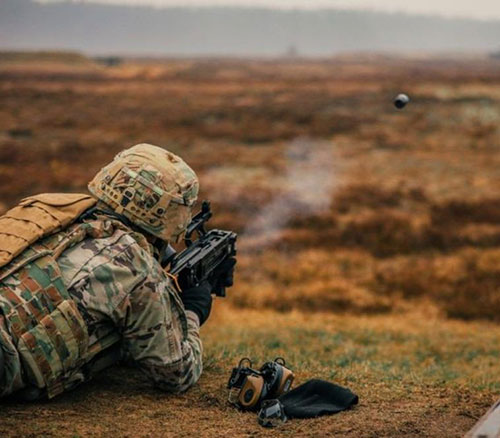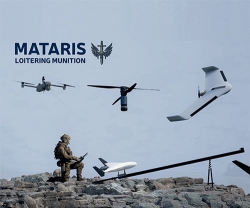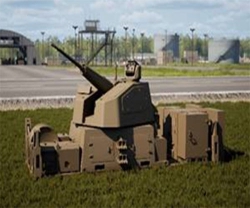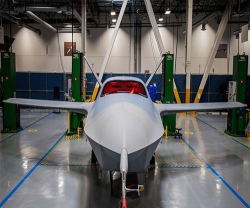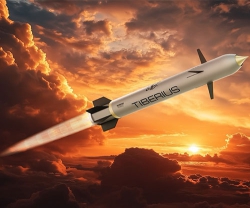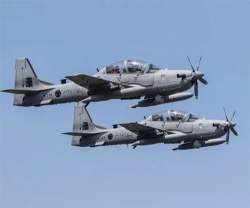Engineers at the U.S. Army’s Aberdeen Proving Ground are working on a small drone capable of being shot from the service’s new grenade launcher. The drone, fired from the M320 grenade launcher, could loiter over the battlefield for more than an hour, allowing troops to locate enemies without endangering themselves. The drone would effectively give groups of two or three soldiers their own spy aircraft, the U.S. Army News Service reported.
Grenade Launched Unmanned Aerial System, or GLAUS, is designed to produce a miniature drone that can be launched from the Army’s new M320 grenade launcher. The M320, developed by German small arms manufacturer Heckler & Koch, is a breech-loading 40-millimeter grenade launcher that attaches under the barrel of the Army’s M4A1 carbine.
Alternately, it can be fitted with a buttstock and foregrip and used in a stand-alone configuration. The M320 is typically used to lob high explosive, illumination, and tear gas grenades to a range of 400 meters (1,300 feet).
The M320 is a relatively “soft launch” weapon: unlike the M4A1 carbine, which fires a bullet at approximately 2,900 feet per second, the M320 grenade exits the barrel at just 236 feet per second--slower than a paintball. This makes the M320 a candidate for launching an object packed with electronics and with lightweight, relatively fragile wings...like a drone.
The Army says there are two versions of GLAUS under development: “one is a is a small, paragliding system with folding blade propellers and Mylar paragliding wings to help it stay in the air, and the other is a helicopter-style that hovers on a gimbaling set of coaxial rotors.”
After launching, the drone spreads its wings and soars at a fixed airspeed controlled by ground troops with a joystick or handheld device. On the drone, a camera is equipped to provide a video feed to a ground station below.
Images shared by the Army show the helicopter-style drone consists of a motor, 850 mAh battery and camera. The drones have a range of two kilometers, a maximum altitude of 2,000 feet, and can stay in the air for 90 minutes.
GLAUS has nearly limitless opportunities on the battlefield. Soldiers could search for snipers, plot safe routes on the ground, and locate the positions of enemy fighters on the battlefield. A squad leader could search for lost troopers and even use the drone to lead friendly troops to his or her position—all without leaving the safety of protective cover.
GLAUS will take unmanned aerial vehicle technology, which for years was exclusive to generals and colonels, and pushes it all the way down to the fire team level—the smallest organized unit in the U.S. Army. For the first time, soldiers in groups as small as four will be able to direct their own drones and benefit from live overhead video feeds. Greater situational awareness allows leaders to make better decisions faster than their adversaries, and GLAUS will allow even small groups of soldiers to take account of their surroundings.
One of the best things about GLAUS is that there will be plenty of existing launching systems on the battlefield. Instead of issuing the troops a new drone launcher and piling new equipment onto already overburdened troops, GLAUS repurposes an existing weapon system. Each U.S. Army infantry squad is divided into two teams of four infantrymen each, and each team is assigned one M320. A company of approximately 150 soldiers would have up to 18 GLAUS-capable grenade launchers assigned to it.

